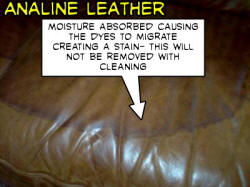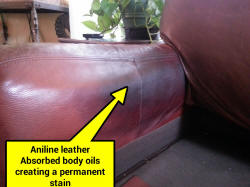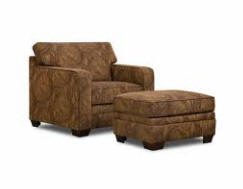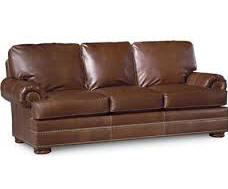PIGMENTED OR “PROTECTED” LEATHER
Cleaning Code: P
Pigmented leather may also be called: “Painted”, “Protected”, “Finished” or “Semi-Aniline”. Some manufacturers may call leather products by company names to separate themselves from other company’s terms.
Pigmented is aniline leather that has had a finish and topcoat containing pigment applied to the top-grain side of the hide. The finish and topcoat are applied to add a protective coating that assist in water repellency and cleanibility. It is also used to enhance the esthetics of the leathers’ appearance. This leather has a smooth or slick “hand” feel due to its finish system.
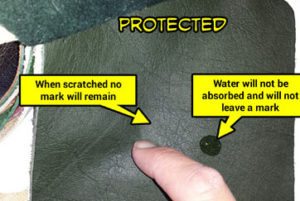
SPECIFICATION AND CONCERNS
This leather is very easy to clean. Many times it is called kid and pet friendly; however kids like to write on things and this will not come off any type of leather. If that occurs the finish system normally has to be removed in that area and be replaced by a specialist in leather repair. Dogs and cats can cause damage with nails and body oils.
The most common issue we see is the finish system not adhering. This can be caused by numerous reasons including bad surface prep, not enough resins in the finish, inter-coat adhesion issues and more. It should suffice to say that when a finish system fails it normally is a manufacturing issue. There exceptions such as abuse or body oils degrading the finish. This should be kept in mind when choosing where to use it. Bad specification for use will equate to a poor performance and dissatisfaction both with the leather and the specifiers.


